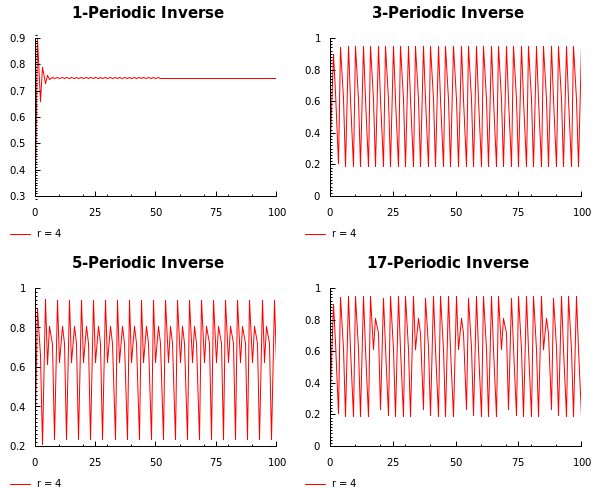Difference between revisions of "TFPIE2012: Recursion Schemes of Scientific Models"
Jump to navigation
Jump to search
| Line 9: | Line 9: | ||
The following diagrams can be produced from the Literate Haskell code (provided some not quite hassle-free Haskell packages are installed, sorry). | The following diagrams can be produced from the Literate Haskell code (provided some not quite hassle-free Haskell packages are installed, sorry). | ||
| − | [[File:TFPIE2012 | + | * [[File:TFPIE2012-_Recursion_Schemes_of_Scientific_Models-demoA.png|frame|alt=Demo: Inverse Modelling with Input.|Inverse Modelling with Input.]] Backwards trajectories for the logistic map with r=4 are plotted for 100 steps. In the forward mode, the map is completely chaotic for this parameter value, i.e., periodic of all lengths exist, but are unstable. In the backwards mode, these solutions become stable such that most initial states are attracted to them. By the simple expedient of driving the reverse map with a periodic stream of binary input of the desired period length, convergence towards a solution of that period length is effected. Running forwards from a state obtained by this procedure, the appearance of a periodic trajectory is produced. Of course, it will break down eventually because of chaos, but the longer the backwards search procedure, the longer the appearance can be maintained. Simple cases of length 1 and 3 are shown, as well as for 5 and 17. Those are virtually impossible to construct in the forward mode. |
Revision as of 11:05, 2 June 2012
The Recursion Schemes of Scientific Models
By: Baltasar Trancón y Widemann
- Draft proceedings version File:TFPIE2012 Draft RecursionSchemesOfScientificModels Widemann.pdf
- Literate Haskell Archive File:TFPIE2012 Supplement RecursionSchemesOfScientificModels Widemann.zip
Visual Demonstrations
The following diagrams can be produced from the Literate Haskell code (provided some not quite hassle-free Haskell packages are installed, sorry).
- Backwards trajectories for the logistic map with r=4 are plotted for 100 steps. In the forward mode, the map is completely chaotic for this parameter value, i.e., periodic of all lengths exist, but are unstable. In the backwards mode, these solutions become stable such that most initial states are attracted to them. By the simple expedient of driving the reverse map with a periodic stream of binary input of the desired period length, convergence towards a solution of that period length is effected. Running forwards from a state obtained by this procedure, the appearance of a periodic trajectory is produced. Of course, it will break down eventually because of chaos, but the longer the backwards search procedure, the longer the appearance can be maintained. Simple cases of length 1 and 3 are shown, as well as for 5 and 17. Those are virtually impossible to construct in the forward mode.
